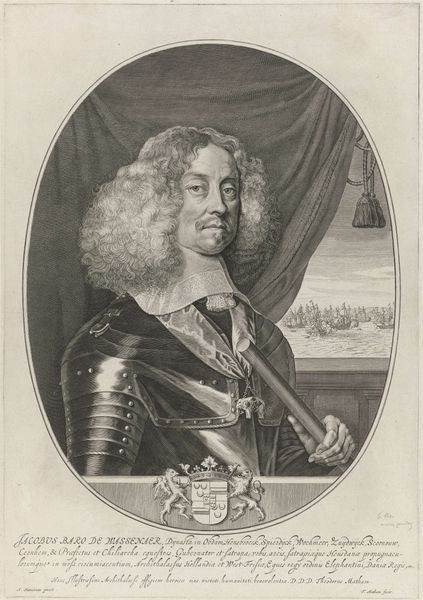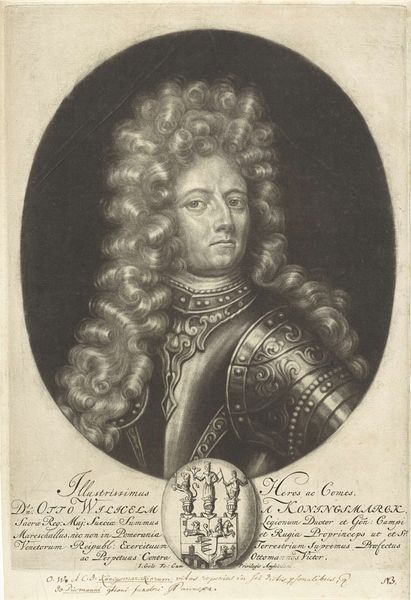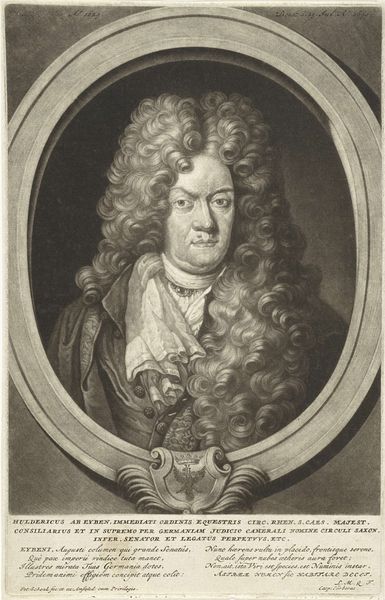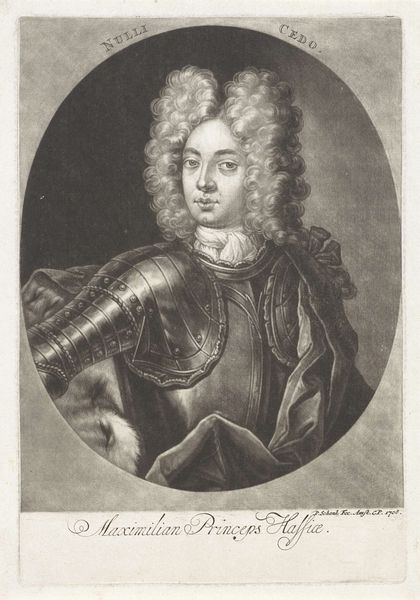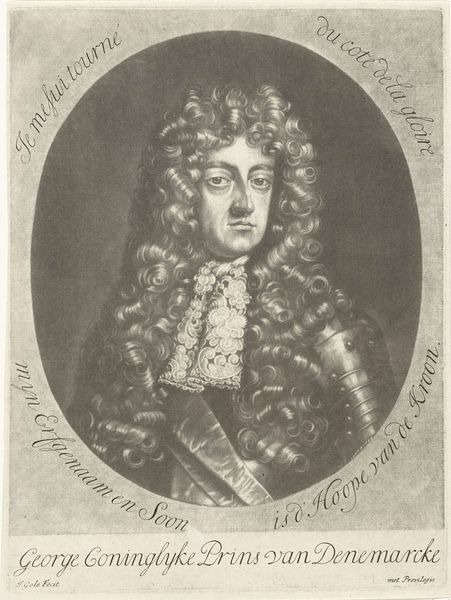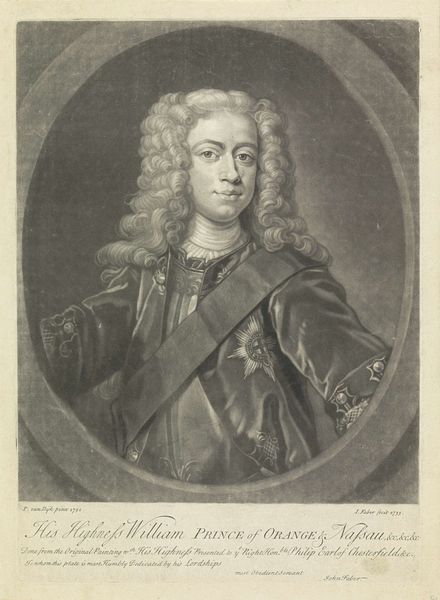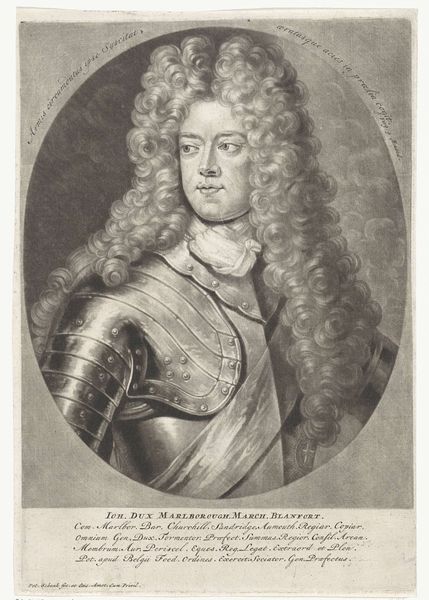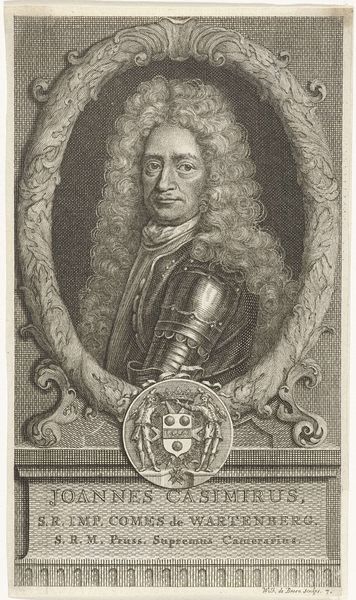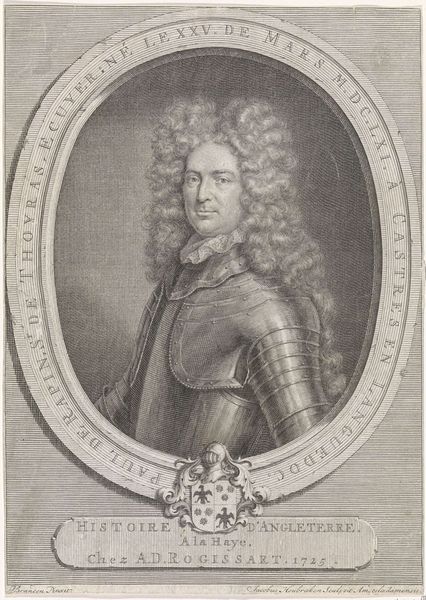
print, engraving
#
portrait
#
baroque
# print
#
engraving
Dimensions: height 266 mm, width 179 mm
Copyright: Rijks Museum: Open Domain
This print of François Fortunate van Isselbach was made by Pieter Schenk, sometime between 1695 and 1711, using mezzotint. Isselbach is depicted in armour and an elaborate wig, visual codes of power and status in the late 17th century Dutch Republic. What can these kinds of portraits tell us about the institutions of power in this period? The Dutch Republic was a society dominated by a relatively small group of wealthy merchants and landowners. But unlike other European states, it did not have a monarch, and its elites had to find other ways of legitimating their status. Military prowess was one way, as was conspicuous consumption. Isselbach’s portrait combines both of these strategies. To understand this image better, we need to look at the social history of the Dutch Republic, the relationship between the military and the state, and the culture of portraiture in this period. This kind of research can help us to understand the ways in which art is always embedded in a particular social and institutional context.
Comments
No comments
Be the first to comment and join the conversation on the ultimate creative platform.

